- Bernard Preston homepage
- Our green garden
- Grow Your Own Food
Grow your own food
Grow your own food because working outside is such good exercise, you get plenty of natural vitamin D and you can be assured there are no toxic ecocides.
The Grow Network reports that Australians, the Chinese and the Americans are the top three gardening countries in the world; and that 35% of U.S. households grow vegetables, fruit and other foods.
They also declare that a 10m2 patch can feed a person for a whole year; and that the average gardener spends five or six hours a week busy with a spade, planting and reaping their food.
According to Stats SA less than 20% of South Africans grow any of their own fruit or vegetables. And that over a quarter of our children are permanently stunted by the age of five; starved of good food.
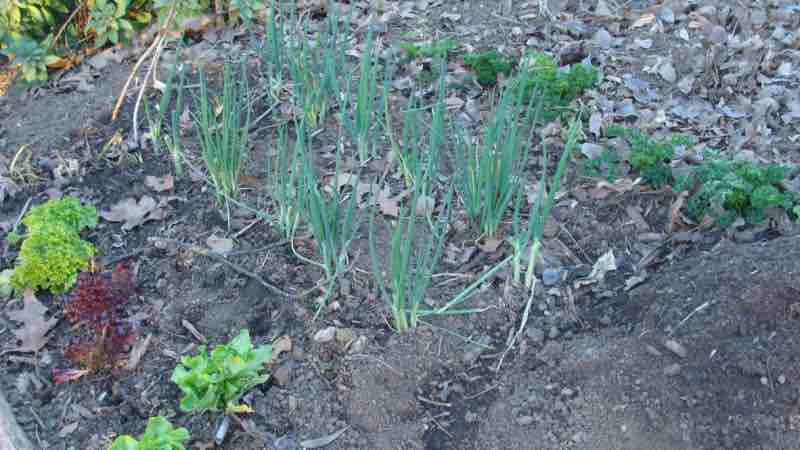 Little garden patches can grow a lot of food
Little garden patches can grow a lot of foodFive reasons
So here are my five reasons to start gardening this spring.
- Food that you grow is fresher, tastier and free from noxious chemicals. I’m sure you have seen in the press the billions being paid out to those suffering from blood dycrasias caused by a common herbicide.
- Researchers state that a “vitamin D deficiency is the most common medical condition worldwide.” And astonishingly that in the main for those younger than 75, they should not be taking supplements; especially if also prescribed a calcium compound. It’s a complex subject, with many different opinions so be guided by your doctor. Gardening with a hat on supplies ample of this incredibly important nutrient for free.
- It’s an excellent form of exercise. That means stronger bones and lowered blood glucose. Recent research in JAMA reveals that every extra 2 hours of watching TV will reduce the likelihood of healthy ageing by 12%; but just sixty minutes of moderate to vigorous exertion such as gardening will give a 14 percent increase.
- The literature is strong. When you feel out of tune with the world there is solace to be discovered in the garden; it is a return to nature. It's our version of forest bathing; such a joy.
- You’ll save a lot of money. The Grow Network claims that for every rand you spend on gardening you will get a direct return of R7.60 of food; that is better than even Bitcoin can guarantee.
So where do you begin? There is no right or wrong place; talk to ten gardeners and you’ll get 10 different answers. But I would start with those foods that are easy to grow.
Fruit
I would start with the humble cape gooseberry if you live in South Africa. It grows like a weed and will provide you with fresh fruit every single day for most of the year. Ask around and you’ll get a few seedlings for free from your gardening friends.
Add to that a lemon and if you have the space, an avocado. I did a rough calculation recently. The lemon and avocado that we planted 40 years ago have each given us more than R50,000 worth of fruit at today’s prices. I recommend grafted trees.
Vegetables
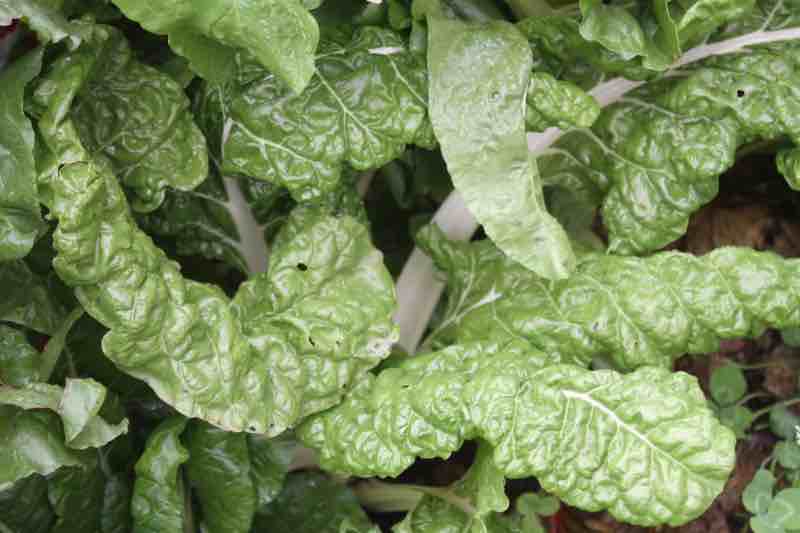 Dark green leafy spinach
Dark green leafy spinachAgain there’s no right and wrong answer. But I would start with Swiss Chard, radishes and mealies. They are all very easy to grow.
Currently we are planting spuds. I have not recommended them in the past but recent reports of herbicide residues and the influence of those from cold-storage on diabetes have got me thinking. Baby new potatoes are unlikely to have that effect; they have what is known as “resistant starch.” Instead of giving a glucose surge they will go to feed the friendly bugs in the colon.
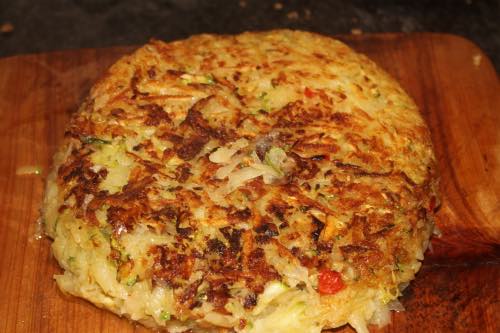 A rösti made from new potatoes; crispy with a soft centre.
A rösti made from new potatoes; crispy with a soft centre.Nevertheless the obese should only eat small portions of even the healthy, nutritious starches; keep the glycaemic load down.
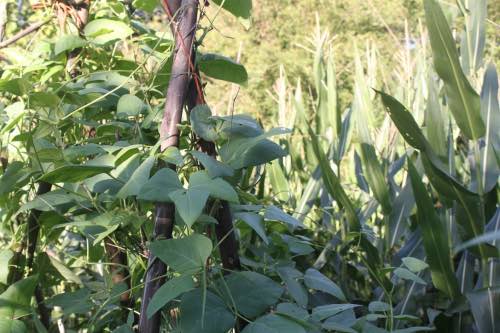 Corn and a profusion of lima beans
Corn and a profusion of lima beansLegumes are a very important part of our garden. Once the danger of frost is over we’ll be planting green beans every few weeks. Witsa and Lima climbers are our favourites in the summer; favas and peas in the winter. They will need a trellis made from treated wattle poles or bamboo canes.
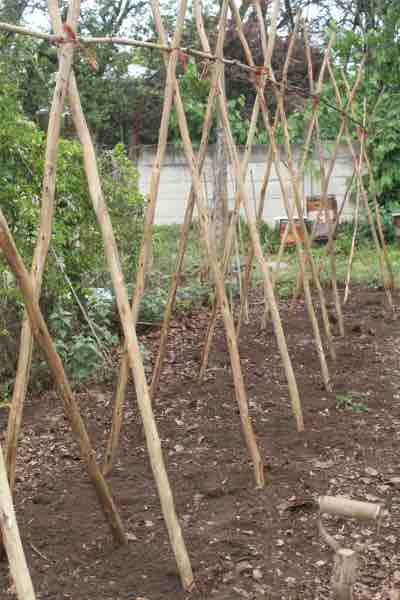
Water
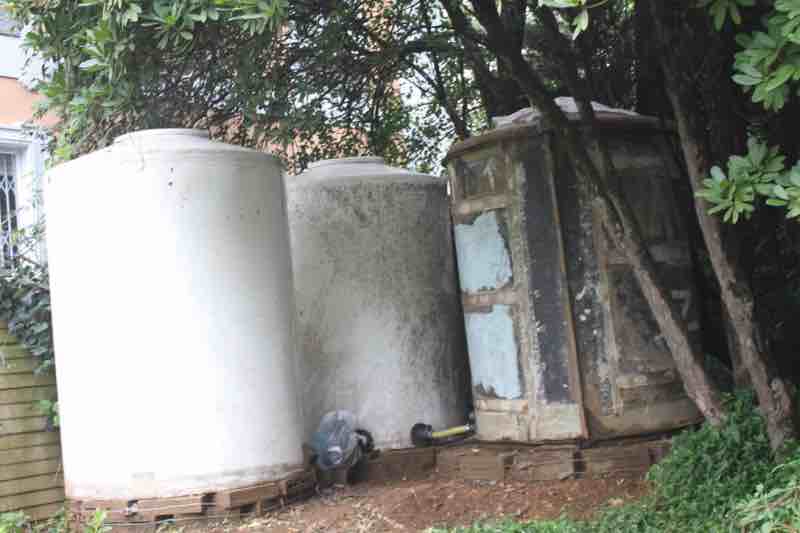 Fibreglass tanks last for ever
Fibreglass tanks last for everIrrigation is the biggest conundrum; you cannot grow vegetables without it. Harvesting and storing the rain gets first prize but it requires a considerable investment in tanks or a reservoir; one that will give an excellent return at the current price of municipal water. Ours are long paid off.
A friend recently told me their monthly water bill is R5000!
I’m not ashamed to say it. Our supplies are running low at the end of a very dry winter; every day we carry a dozen buckets of rinse water from the washing machine to the fava beans, peas and dark-green leafy vegetables. We should have made the reservoir a little larger; 5m in diameter. The avocados are getting some attention too; oh the blessing of fresh fruit every day from your garden.
There is strong research confirming that axial loading of your spine and femurs will strengthen them; but those who have lower back troubles should always carry two buckets containing a half or less of water.
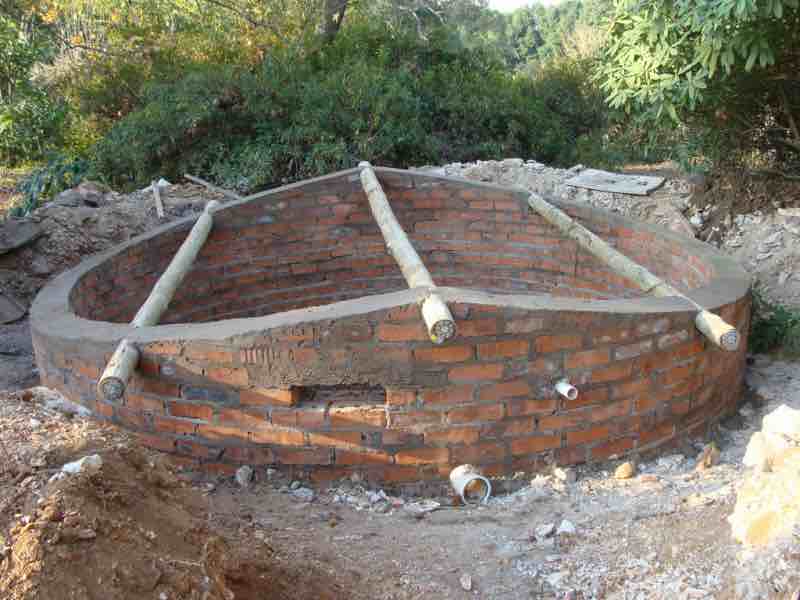
For the average family two metres in radius and 2m deep is adequate.
If you are a gardener and have a swimming pool to fill in the dry season then make the diameter say 5m.
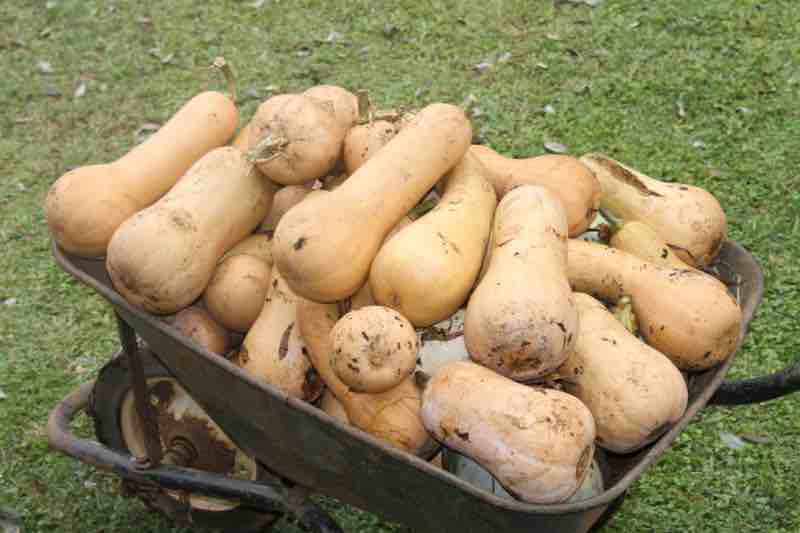 Enough butternut to last a year; rich in carotenes and B6.
Enough butternut to last a year; rich in carotenes and B6.Compost heap
I have to give a plug for the compost heap; they are central to every organic garden. Or spend a lot of money on inorganic fertiliser which cannot supply all the missing elements. Start with a base of very rough material, then dry autumn leaves and the prunings; your hydrangeas, ginger and many other plants. It’s a vast subject all on its own.
Grow your own food; aim for at least 50%.
Grow your own food
Grow your own food because fresh fruit and veggies taste so good.
When browsing use right click and "Open Link in New Tab" or you may get a bad gateway signal.
Newsletter
Our newsletter is entitled "create a cyan zone" at your home, preserving both yourself and Mother Earth for future generations; and the family too, of course. We promise not to spam you with daily emails promoting various products. You may get an occasional nudge to buy one of my books.
Here are the back issues.
- Lifestyle and ideal body weight
- What are ultra-processed foods?
- Investing in long-term health
- Diseases from plastic exposure
- Intensive lifestyle management for obesity has limited value
- A world largely devoid of Parkinson's Disease
- The impact of friendly bacteria in the tum on the prevention of cancer
- There's a hole in the bucket
- Everyone is talking about weight loss drugs
- Pull the sweet tooth
- If you suffer from heartburn plant a susu
- Refined maize meal and stunting
- Should agriculture and industry get priority for water and electricity?
- Nature is calling
- Mill your own flour
- Bake your own sourdough bread
- Microplastics from our water
- Alternative types of water storage
- Wear your clothes out
- Comfort foods
- Create a bee-friendly environment
- Go to bed slightly hungry
- Keep bees
- Blue zone folk are religious
- Reduce plastic waste
- Family is important
- What can go in compost?
- Grow broad beans for longevity
- Harvest and store sunshine
- Blue zone exercise
- Harvest and store your rainwater
- Create a cyan zone at your home
Did you find this page interesting? How about forwarding it to a friendly book or food junkie? Better still, a social media tick would help.
- Bernard Preston homepage
- Our green garden
- Grow Your Own Food
Address:
56 Groenekloof Rd,
Hilton, KZN
South Africa
Website:
https://www.bernard-preston.com